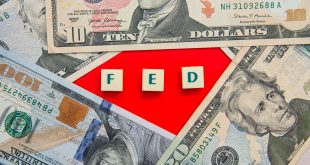Gold advances on weaker than expected US data despite strong US Dollar
Gold rebounds from daily lows, with the assistance of a significant push by a sharp drop in US consumer sentiment and future economic outlook. High US Treasury yields weren’t an excuse for Gold’s advance. US consumers expect inflation to remain above 3% over a one-year period.
Fed officials are cautious about rate cuts, with mixed signals from different Fed governors. Gold prices advanced sharply late in the North American session on Friday, up by more than 1% despite US Treasury bond yields remaining high. A University of Michigan (UoM) survey showed that Americans had become pessimistic about the economy as Consumer Sentiment plunged to its lowest level in six months.
Earlier on the day, the XAU/USD Index traded at $2,369 after bouncing off daily lows of $2,343. Friday’s sentiment data and the weaker labour market figures revealed since the beginning of May paint a gloomy outlook for the economy of the United States (US). Although fears of a pronounced economic slowdown remain low, market participants seeking safety drove the golden metal and the US Dollar higher. The precious metal is trading at 2,360.22 per ounce at the time of writing.
Federal Reserve officials continued to cross newswires. Atlanta’s Fed President Raphael Bostic remained hawkish, saying the Fed is on track to just one rate cut in 2024. Later, Fed Governor Michelle Bowman said that policy needs to be kept “steady” and doesn’t see rate cuts as warranted this year. The Dallas Fed’s Lorie Logan disregarded the idea of cutting interest rates.
Minneapolis Fed Neel Kashkari has recently said he is in “wait and see mode” about future monetary policy. Next week, the US docket will feature the release of inflation figures, retail sales, building permits and Fed speeches.
Gold prices fell amid lower US Treasury yields and a strong US Dollar. The US 10-year Treasury note yields 4.504% and gained almost five basis points (bps) from its opening level. The US Dollar Index (DXY), which tracks the Greenback’s performance against six other currencies, rose 0.12% to 105.32.
The University of Michigan Consumer Sentiment Index significantly declined in May, falling from 77.2 in April to 67.4 and did not meet the analysts’ expectations of 76. Joanne Hsu, the Director of the UoM Survey, highlighted that the 10-point drop is statistically significant and marks the lowest level of consumer sentiment recorded in approximately six months.
Additionally, inflation expectations have escalated. Inflation expectations rose from 3.2% to 3.5% in May for the one-year outlook. Over a 10-year period, expectations increased slightly from 3.0% to 3.1%.
Softer-than-expected labour market figures, as shown by last month’s US employment report and unemployment claims data, may exert pressure on the Fed. Officials recognized that the risks to achieving the Fed’s dual mandate of fostering maximum employment and price stability have become more balanced over the past year. After the data release, Fed rate cut probabilities increased from around 33 basis points (bps) to 34 bps points of rate cuts toward the end of 2024.
 Noor Trends News, Technical Analysis, Educational Tools and Recommendations
Noor Trends News, Technical Analysis, Educational Tools and Recommendations





